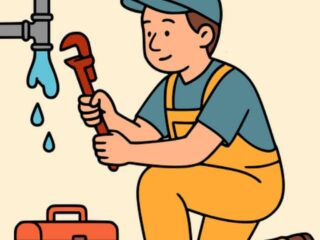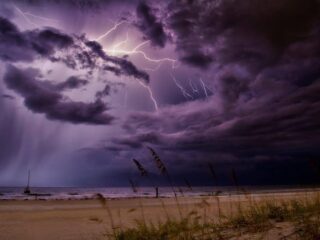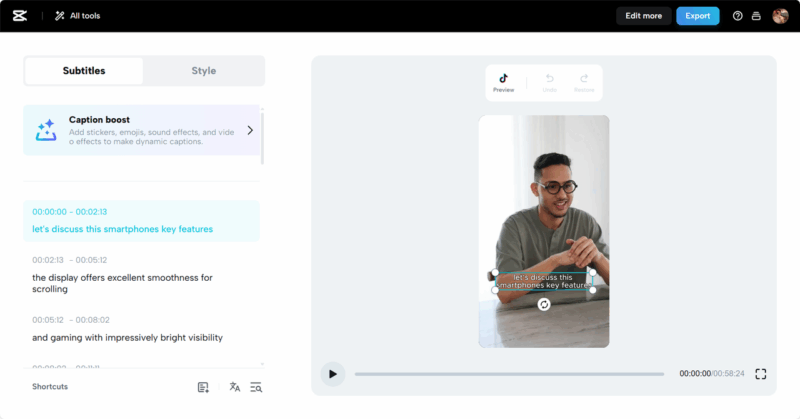There’s nothing quite as frustrating as dealing with slow or blocked drains. One minute, everything’s fine, and the next, water starts pooling, backing up, or even bringing bad smells into your home. But how do you figure out which drain is causing the problem? Whether it’s the kitchen sink, bathroom drains, or the toilet, knowing where to look can save you time, effort, and potentially a costly plumber’s visit. Let’s trace the source of a drain blockage so you can get your water flowing freely again.
Common Signs of a Clogged Drain
Before you can figure out which drain is the culprit, it’s important to recognize the signs that one or more drains are clogged.
Slow Draining Water: This is often the first indicator of a blockage. If water is taking longer than usual to disappear down the drain, it’s a telltale sign that something’s obstructing the flow.
Water Backing Up: If water starts to back up into other fixtures (like the kitchen sink while you’re running the dishwasher), this could be a sign that a blockage is affecting more than one drain.
Unpleasant Odours: Stinky drains are usually caused by waste or stagnant water being blocked somewhere along the pipes. It’s not just unpleasant, it’s also a sign that action is needed.
Gurgling Noises: Hearing gurgling sounds from your drains? That’s often caused by trapped air trying to escape past a blockage. These noises tend to occur just after you’ve drained water from a sink or flushed the toilet.
Identifying Blockages in Specific Drains
Once you’ve confirmed that you have a blockage, the next step is to figure out which drain is the problem. Let’s break down the most common culprits.
Bathroom Sink
In the bathroom, it’s usually a mix of hair, soap residue, and toothpaste that leads to clogs. You might notice water pooling around the drain or draining unusually slowly. Over time, even small bits of debris can accumulate and cause problems. Read more about whether a toilet and shower can share the same drain on the link.
Kitchen Sink
Kitchen sinks are prone to blockages because of the grease, food particles, and soap scum that build up over time. You’ll know there’s an issue when the water starts backing up while using the tap or dishwasher. Grease, in particular, tends to harden in the pipes, creating a stubborn blockage.
Shower/Bathtub
Shower and bathtub drains are notorious for getting clogged by hair and soap scum.

If you find yourself standing in a puddle of water while showering or notice that the tub takes ages to drain after a bath, it’s likely that hair is the culprit.
Toilet
Toilet blockages are usually caused by excessive toilet paper or non-flushable items like wipes. If the water rises too high when you flush or doesn’t drain away at all, the blockage is in the toilet drain. Unlike other drains, toilet clogs tend to be more urgent, as they can quickly escalate into messy overflows.
Outdoor Drains
Leaves, dirt, and debris often clog outdoor drains, particularly during autumn or after a storm. If you notice water pooling in your garden or driveway after heavy rain, your outdoor drains could be blocked. These blockages can lead to water not draining away properly and might even cause flooding if left unchecked.
Things You Can Do to Stop Drain Blockages
One of the best things you can do is educate yourself on what causes drain blockages. When you know what the common culprits are, you can avoid them at all costs. Indeed, you can save yourself a lot of money and hassle later on by avoiding a blockage altogether. From grease to baby wipes, there are many things that cause trouble for drains. Here are a few things you can do that are easy and can stop drain blockages from happening.
Clean Dishes First
Are you guilty of throwing plates in the sink and washing them with food debris? This is a way you can get a blockage. All of this food falls down the drain, and it can end up sticking to the pipes. Eventually, this can become large enough to cause a blockage, which stops water from draining away.
Unfortunately, there’s no way around this one. You need to clean the dishes in the bin first before washing them in the sink. While it might seem like a tedious task, it’s something simple you can do to avoid a large bill later on.
Use Drain Catchers
Have you heard of drain catchers before? Just as the name suggests, this is a simple device that’s going to catch any debris and stop it from going down the drain.

They can be used over drains in the kitchen sink, as well as in the shower. Indeed, any debris is going to fall into them, and you can throw it in the bin. It provides a netting over the drain, protecting it from anything that could cause a blockage later on. Normally, they’re inexpensive to buy.
Provide Bathroom Bins
Often, people will flush items down the toilet simply because they’ve got nowhere else to put it. For example, this can apply to baby wipes and sanitary products. Instead of this happening and causing a blockage, it’s advised to provide bathroom bins. They should be beside every toilet so there’s no temptation to flush.
Conclusion
Knowing how to identify which drain is clogged can save you from unnecessary stress and costly repairs. By paying attention to the warning signs, testing your drains, and trying simple DIY solutions, you can often solve minor issues yourself. However, for bigger problems or persistent clogs, don’t hesitate to call in a professional. Prevention is key—regular maintenance and mindful disposal habits will keep your drains running smoothly for the long term.













